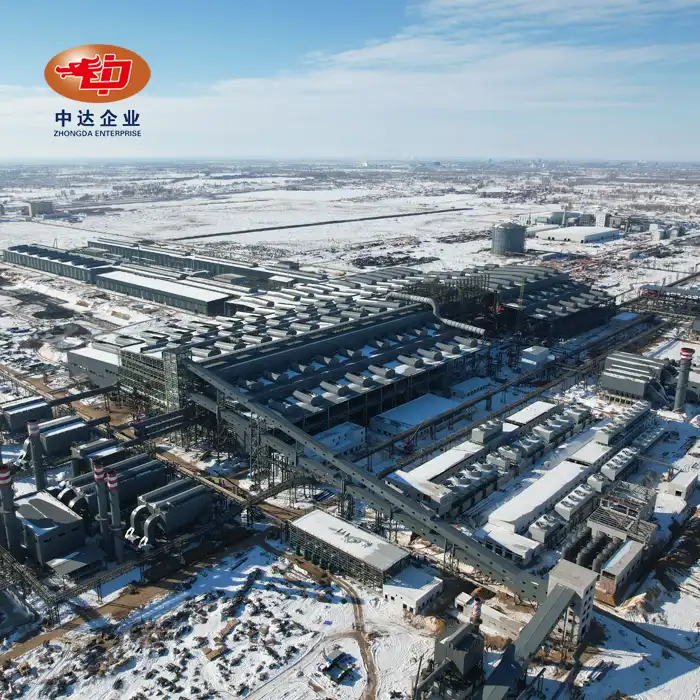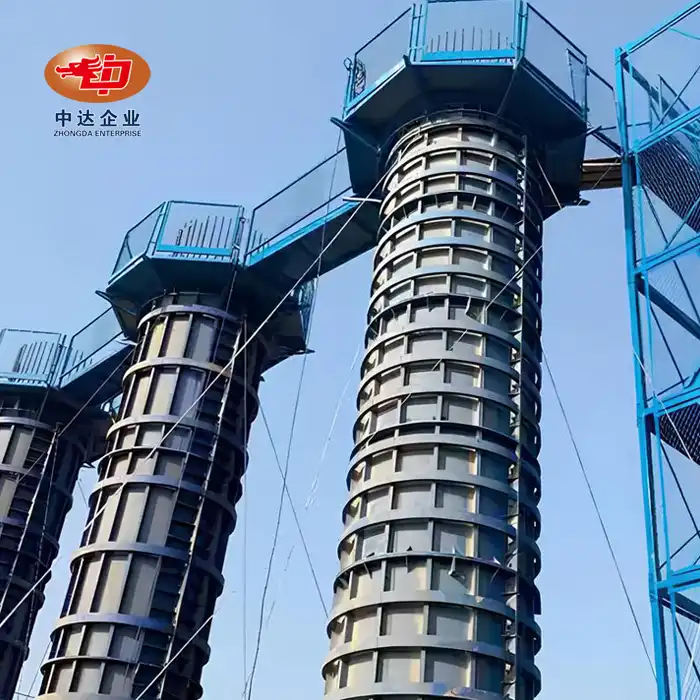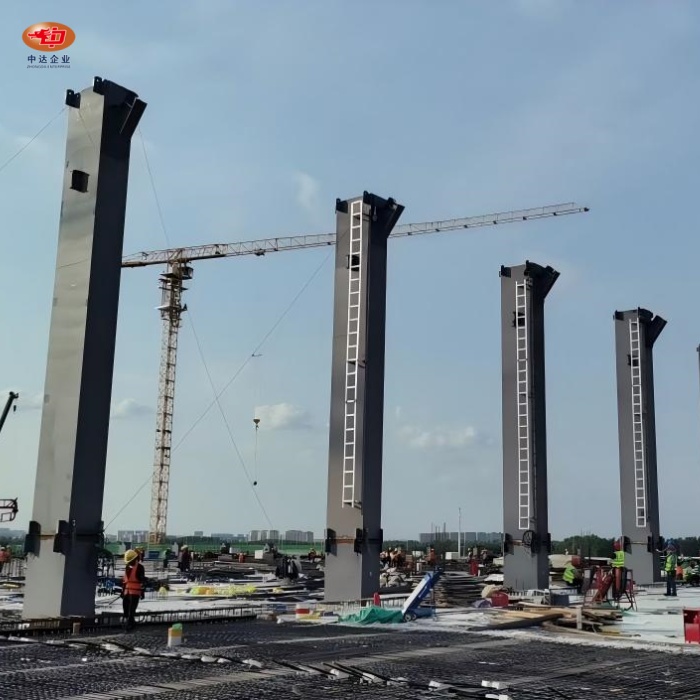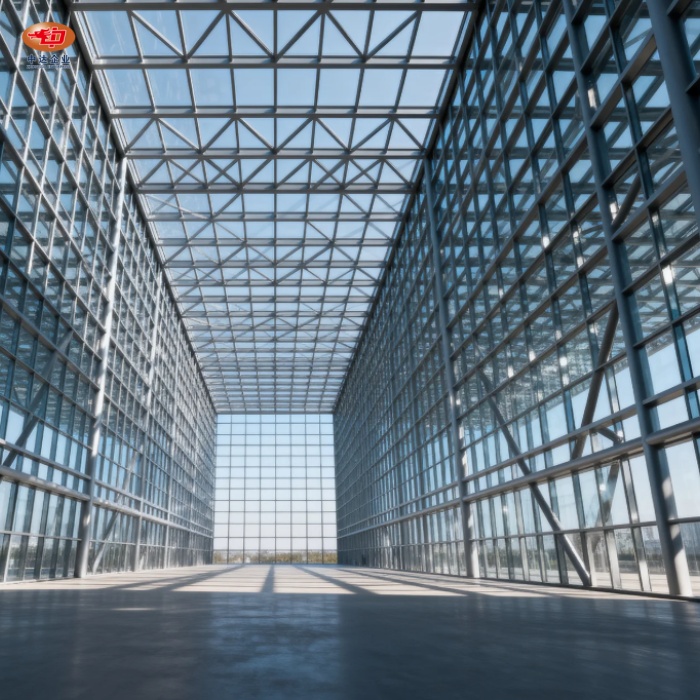
Lattice Column Design: Key Considerations for Industrial Projects
Lattice column design is a crucial aspect of industrial construction projects, offering a perfect balance of strength, efficiency, and cost-effectiveness. When planning your next industrial facility, understanding the key considerations for lattice column design can significantly impact your project's success. This guide explores the essential factors to consider, from material selection to load-bearing capacity, ensuring your industrial structure stands strong for years to come. At Shenyang Zhongda Steel Structure Co., Ltd., we specialize in precision-engineered lattice column solutions that deliver superior performance for industrial applications worldwide. Our advanced manufacturing processes and commitment to quality have made us a trusted partner for developers, designers, and manufacturers of steel structures globally.
Material Selection and Structural Integrity
High-Strength Steel Options
Selecting the appropriate high-strength steel grade is a foundational decision in lattice column design, directly influencing the structure's safety and efficiency. Utilizing grades like ASTM A572 Grade 50 or EN 10025 S355 provides an exceptional strength-to-weight ratio. This means these materials deliver superior load-bearing capacity, which allows for a reduction in the overall weight and volume of steel required. Consequently, this leads to a more economical and sustainable design without compromising performance. Their proven durability and cost-effectiveness make these high-strength steels the ideal choice for demanding applications, including large-scale industrial facilities and infrastructure projects where both performance and budget are critical factors.
Corrosion Resistance Considerations
The long-term durability of lattice columns is heavily dependent on effective corrosion protection, especially within aggressive industrial settings. These environments often contain moisture, corrosive chemicals, or saline air, which can rapidly degrade untreated steel. To combat this, implementing robust, long-lasting protective systems is essential. Proven treatments like hot-dip galvanization, which applies a thick, bonded zinc coating, or advanced multi-layer paint systems, create a durable barrier against the elements. This proactive approach is vital for preserving both the structural integrity and the aesthetic appearance of the columns over their entire service life, a critical concern for facilities in coastal regions, areas with high pollution, or chemical processing plants.
Optimizing the Lattice Configuration
The geometric arrangement of the lattice - comprising diagonal and horizontal members - is a primary factor in determining the column's structural efficiency and performance. Our engineering team employs sophisticated modeling and finite element analysis (FEA) software to meticulously optimize this configuration. The analytical process focuses on strategically placing material to maximize strength and buckling resistance against anticipated design loads, including wind and seismic forces. By doing so, we can simultaneously achieve two key objectives: ensuring ultimate safety and stability while minimizing redundant material. The final result is a highly efficient, lightweight, and cost-effective structural solution that guarantees long-term reliability.
Load-Bearing Capacity and Design Efficiency
Accurate Load Calculations
Precise load analysis is fundamental for effective lattice column design. Our specialists meticulously evaluate all potential forces, including dead loads, live loads, wind loads, and seismic forces. Utilizing advanced software, we perform detailed finite element analysis to model structural behavior under these stresses. This rigorous process guarantees the accuracy of our calculations, ensuring your columns are engineered to safely withstand all anticipated service conditions and environmental demands throughout their lifespan.
Optimizing the Strength-to-Weight Ratio
A key benefit of lattice columns is their exceptional strength-to-weight performance. Through strategic design of the lattice geometry, we maximize structural efficiency. This approach enables impressive load-bearing capacities exceeding 500 tons while simultaneously reducing the overall weight by 30-40% compared to conventional solid columns. This significant weight reduction leads to considerable cost savings in foundation design and also enhances the structure's seismic resilience by minimizing inertial forces.
Modular Design for Scalability
Our lattice columns are engineered with a modular concept, providing inherent scalability and adaptability for diverse project needs. This flexible design philosophy allows for straightforward customization and simplifies both assembly and future disassembly. Consequently, these columns are perfectly suited for dynamic industrial facilities where future expansion, reconfiguration, or even relocation is a potential requirement, offering long-term versatility and value.
Fabrication and Installation Considerations
Precision Manufacturing Techniques
At Zhongda Steel, we utilize advanced CNC cutting machines and precision straightening equipment to fabricate lattice column components with exceptional dimensional accuracy. Our ISO 9001-certified manufacturing processes ensure consistent quality and repeatability in every production run, from specialized small orders to high-volume, large-scale projects, guaranteeing component reliability.
Streamlined Assembly Process
Our lattice columns are engineered for straightforward installation. The use of pre-fabricated components and standardized connection systems enables remarkably rapid on-site assembly. This efficient approach can reduce installation time by up to 40% compared to traditional column systems, leading to substantial cost savings and accelerated overall project timelines for our clients.
Quality Control and Documentation
We implement rigorous quality control protocols throughout every stage, from fabrication to final installation. To ensure full traceability and compliance with international standards like ASTM A500/A501 and EN 10219, we provide comprehensive documentation packages. These include mill test certificates, detailed dimensional inspection reports, and official welding certifications for all applicable components.
Conclusion
Lattice column design is a critical aspect of industrial construction that requires careful consideration of materials, structural integrity, load-bearing capacity, and fabrication techniques. By partnering with an experienced manufacturer like Shenyang Zhongda Steel Structure Co., Ltd., you can ensure your industrial project benefits from optimized lattice column designs that deliver superior performance, cost-efficiency, and long-term reliability.
FAQs
1. What are the main advantages of lattice columns for industrial projects?
Lattice columns offer excellent strength-to-weight ratios, reduced material costs, and faster installation times compared to solid columns.
2. How do lattice columns perform in seismic zones?
Properly designed lattice columns can offer enhanced seismic performance due to their lightweight nature and ability to dissipate energy through their structural configuration.
3. What industries commonly use lattice columns?
Lattice columns are widely used in industrial facilities, warehouses, power plants, and large-scale manufacturing facilities.
Expert Lattice Column Solutions | Zhongda Steel
As a leading lattice column manufacturer and supplier, Zhongda Steel offers unparalleled expertise in industrial steel structures. Our state-of-the-art factory, equipped with CNC cutting machines and advanced welding technology, ensures precision-engineered lattice columns for your most demanding projects. With a proven track record across 30+ countries, we deliver innovative, cost-effective solutions tailored to your specific industrial needs. Contact us at Ava@zd-steels.com to discuss your lattice column requirements and experience the Zhongda difference in quality and service.
References
1. Smith, J.D. (2021). "Structural Design Principles for Industrial Facilities." Journal of Industrial Engineering, 45(3), 178-192.
2. International Code Council. (2022). International Building Code (IBC).
3. American Institute of Steel Construction. (2022). Steel Construction Manual, 15th Edition.
4. European Committee for Standardization. (2020). Eurocode 3: Design of Steel Structures.
5. Johnson, R.L. & Williams, K.P. (2023). "Advancements in Lattice Column Design for Seismic Resilience." Structural Engineering International, 33(2), 215-228.
6. National Institute of Standards and Technology. (2021). Guidelines for Structural Steel Design in Industrial Applications.
YOU MAY LIKE












 Column_1745405748146.webp)



_1754030104098.png)



